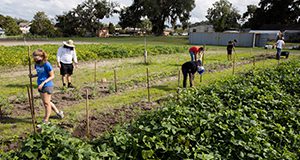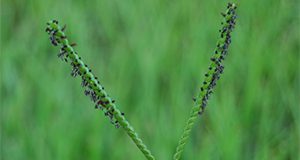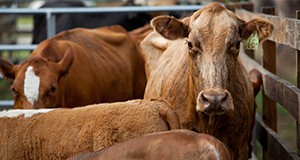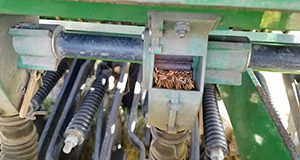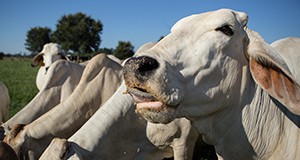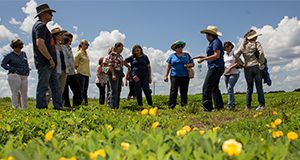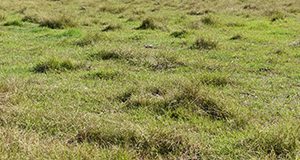Planning and preparation can increase chances of successful outcomes from demonstration plots. This 5-page publication focuses on guiding the successful establishment of demonstration trials and is targeted to county, regional, and state specialized Extension faculty who aim to develop on-farm research and demonstration sites as part of their programs. Written by Marcelo Wallau, Esteban Rios, and Ann Blount, and published by the UF/IFAS Agronomy Department, January 2021.
https://edis.ifas.ufl.edu/ag447
Tag: Marcelo Wallau
Bahiagrass (Paspalum notatum Flueggé): Overview and Pasture Management
This 10-page document discusses bahiagrass forage cultivars, forage production, nutritive value, animal performance, planting, pasture renovation, management, and more. Written by Marcelo Wallau, Joao Vendramini, José Dubeux, and Ann Blount, and published by the UF/IFAS Agronomy Department, revised July 2019.
http://edis.ifas.ufl.edu/ag342
Estimating Herbage Mass on Pastures to Adjust Stocking Rate
This new 6-page document explains methods to measure forage mass and utilize that information to estimate an adequate stocking rate. Written by Jose Dubeux, Marcelo Wallau, João Vendramini, Liliane Silva, Jane Griffin, Nicolas DiLorenzo, and Erick Santos, and published by the UF/IFAS Agronomy Department, June 2019.
http://edis.ifas.ufl.edu/ag434
Calibrating Forage Seeding Equipment
Establishing forages from seeds often requires precision equipment to achieve specific seeding rates for a proper pasture stand. Most pieces of equipment have calibration charts, which are useful guides for making an initial setting. However, due to variations in seed size, purity, moisture content, equipment performance, ground speed, and other factors, calibrating equipment prior to each use is recommended. This 5-page document discusses a few calibration techniques for drills and broadcast spreaders. Written by Marcelo Wallau, Joao Vendramini, and Ed Jennings, and published by the UF/IFAS Agronomy Department, revised November 2018.
http://edis.ifas.ufl.edu/ag158
Mycotoxins in Florida Pastures
Beef cattle producers in Florida have expressed concerns about the potential presence of mycotoxins in summer perennial forages. In other regions of the US, mycotoxins in forage crops have caused productivity and economic losses. This 3-page fact sheet provides information about the current state of knowledge regarding mycotoxins in Florida perennial grass pastures. Written by Marcelo Wallau, Brittany Justesen, Ann Blount, Luiz Ferraretto, Glen Aiken, and Aaron Stam, and published by the UF/IFAS Agronomy Department, August 2018.
http://edis.ifas.ufl.edu/ag422
Strip-Planting Rhizoma Peanut into Grazing Systems
Nitrogen (N) is one of the major off-farm inputs in livestock systems, either in the form of N fertilizer or purchased feed. Fortunately, you can reduce those expenses by growing your own nitrogen using forage legumes. Rhizoma perennial peanut (RPP) is a legume adapted to the Florida environment that grows well in mixtures with bahiagrass. This 4-page fact sheet discusses varieties, establishment, weed management, grazing management, and the cost-share program. Written by Jose Dubeux, Lynn Sollenberger, Joao Vendramini, Marcelo Wallau, Ann Blount, Liza Garcia-Jimenez, Erick Santos, and David Jaramillo, and published by the UF/IFAS Agronomy Department, July 2018.
http://edis.ifas.ufl.edu/ag421
Brunswickgrass or Paspalum nicorae: A Weed Contaminant in Southern Pastures and Bahiagrass Seed Production Fields
Brunswickgrass (Paspalum nicorae Parodi) is becoming a problematic weed in summer perennial grass pastures in the Southeast. The plant is competitive with bahiagrass
and bermudagrass. Since it is less palatable, it can eventually dominate a perennial grass pasture. Brunswickgrass has become naturalized and has reportedly contaminated bahiagrass seed fields and pastures in the southeastern states, including some of the important counties for seed production in Florida, such as Gilchrist, Levy, Alachua, Citrus, and Sumter. This 4-page fact sheet provides an overview of brunswickgrass and discusses its appearance, variety/germplasm, and management. Written by Ann Blount, Marcelo Wallau, Brent Sellers, Dennis Hancock, Leanne Dillard, Jose Dubeux, Cheryl Mackowiak, Joao Vendramini, and Clay Cooper, and published by the UF/IFAS Agronomy Department, April 2018.
http://edis.ifas.ufl.edu/ag408
